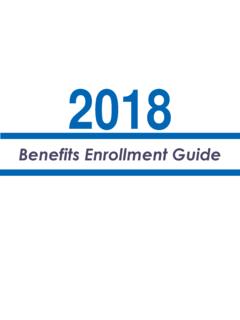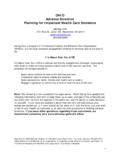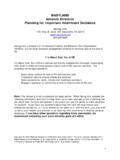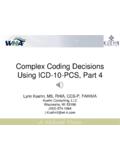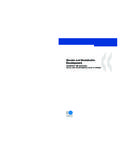Transcription of The scope and nature of 2016 HLM decisions regarding the ...
1 DAC Secretariat, March 2016 In 2012 OECD DAC Ministers agreed to undertake a multifaceted work programme to modernise the DAC statistical system aimed at enhancing its relevance in a changed international landscape and its capacity to deliver the finance that will be needed for the Sustainable Development Goals era. As part of this effort, in 2014 Ministers took decisions that have repositioned the ODA measure as a key standard and reference point for the international development community and opened up new opportunities for mobilising private finance for development. On 18-19 February 2016 the next series of steps in the modernisation agenda were taken, with a series of Ministerial agreements that further improve the coherence and consistency of reporting arrangements and strengthen development effectiveness, in particular as regards ODA supporting peace and security operations, which currently accounts for approximately 2% of ODA.
2 This short note sets out the facts underpinning the peace and security-related decisions . The changes agreed were long overdue and much discussed DAC member countries are aware that issues of conflict and fragility can be seen from a variety of viewpoints. There is, however, a consensus among DAC members that these issues are important challenges to development and are areas that must be addressed in reducing poverty and promoting economic growth. A specialist task team was commissioned by the DAC to look at how the directives could be improved. Members engaged in long, sustained debate about the options on the table, and finally agreed to a common position something that required compromise, since the consensual decision -making processes of the OECD require unanimous agreement.
3 But what was agreed? What has changed? What will remain the same? And what are the implications for overall aid levels? The changes in a nutshell: The DAC clarified ambiguities in reporting rules on peace and security-related expenditures to ensure uniform, consistent statistical reporting, and approved the ODA-eligibility of development-related training for military staff in limited topics. What prompted the changes? The motivations for the changes were three-fold: i) to clarify unclear or ambiguous wording and thereby prevent the abuse and misuse of aid, ii) to respond to developmental challenges in conflict situations, including in relation to military actors and iii) to create a new impetus towards achieving both the Peace-building and State-building Goals and the 2030 Agenda for Sustainable Development.
4 The scope and nature of 2016 HLM decisions regarding the ODA-eligibility of peace and security-related expenditures DAC Secretariat, March 2016 What has not changed? The long-standing rules which govern the ODA-eligibility of peace and security-related expenditures remain intact. To avoid any misunderstanding and to protect the integrity of the ODA concept, members reaffirmed that: Financing of military equipment or services is generally excluded from ODA reporting. The primary objective of ODA-eligible peace and security-related activities must be the promotion of the economic development and welfare of developing countries. Development co-operation should not be used as a vehicle to promote the provider s security interests. The supply of equipment intended to convey a threat of, or deliver, lethal force, is not reportable as ODA.
5 Financing activities combatting terrorism is generally excluded from ODA. Activity-level reporting and ex post Secretariat verification of peace and security-related expenditures will provide the transparency and detail required to ensure the validity of the activity and the integrity of the reporting. What has changed? Limited engagement with partner country military in the form of training: An adjustment has been made to allow limited and specific training of partner country military employees. This will only be permitted: i) under civilian oversight, ii) with a clear development purpose for the benefit of civilians and iii) to help address abuses, prevent violence against women, improve humanitarian response and promote good governance. This change was prompted by recognition among DAC members that an absence of support addressing these issues in conflict-affected countries can have potentially very serious negative effects on development.
6 Using the military as a last resort to deliver development services and humanitarian aid: The new text clarifies that in some circumstances support for the additional costs ( beyond running costs such as salaries, maintenance, etc.) where military are used as delivery agents of development services or humanitarian aid are ODA-eligible. But this is limited by the requirement that it can only be accepted by last resort and reporting countries and institutions can be asked by the Secretariat to justify this was actually the case. Preventing violent extremism: The new directives clarify the rules by spelling out ODA-eligible activities (education and research, community-based efforts, rule of law, capacity of judicial systems, etc.) to prevent violent extremism.
7 They state that such activities should be led by partner countries and that their primary purpose must be developmental: activities targeting perceived threats to the donor country, as much as to recipient countries, rather than focusing on the economic and social development of the partner country are excluded. This clarification is made in the spirit of the recommendations in the 2016 UN Secretary General s Plan of Action to prevent violent extremism. DAC Secretariat, March 2016 What safeguards were added in approving the new reporting rules? DAC members agreed to new standards and safeguards Humanitarian principles are now integrated as a key referent point (humanity, neutrality, impartiality and independence); The Secretariat has the possibility to question the use of the military as the last resort, and The Secretariat can request justification for exceptionally using ODA to finance development or humanitarian activities that are delivered through the military of the partner country.
8 What might be the implications for ODA levels? Peace and security-related expenditures represent 2% of bilateral ODA. These minor adjustments to reporting rules cannot impact ODA volumes in any significant way: only the additional costs of using the military as delivery agents for development services or humanitarian aid are eligible, and the scope of ODA-eligible expenditures for training soldiers is limited.










